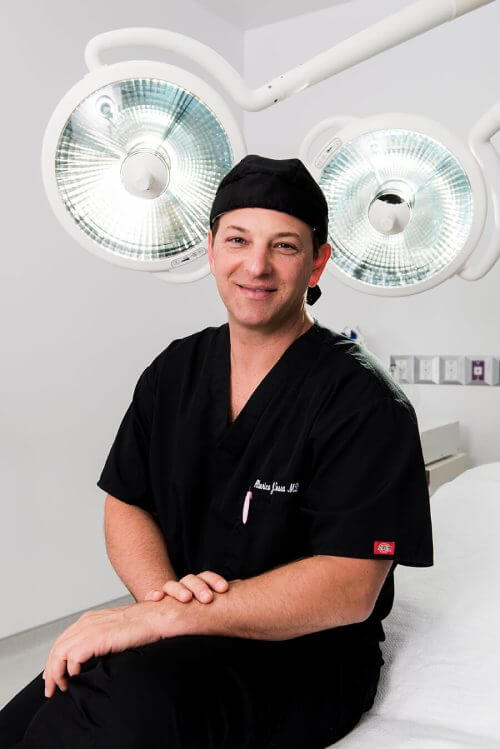Worried your chemical peel didn’t work because you’re not seeing any peeling?
Many people expect dramatic flaking after a chemical peel, assuming it’s the only sign of success, but that’s not always the case. Peeling depends on multiple factors, including the type of peel, your skin’s natural exfoliation rate, and even your pre-treatment skincare routine. The truth? No visible peeling doesn’t mean your peel failed. Modern chemical peels work at different depths, and some stimulate renewal without causing noticeable shedding.
In this guide, we’ll explain why some complexions never shed, when peeling typically begins, and what you can do to support the treatment.
Is It Normal Not to Peel After a Chemical Peel?
Yes, it’s completely normal. Not everyone experiences visible peeling, and that doesn’t mean your treatment was ineffective. Whether or not you shed skin depends on several factors: Skin condition at the time of treatment, depth of penetration, and acid concentration all influence whether flakes form at all. You can still achieve a smoother texture, brighter tone, and pigment improvement without a single sliver of lifting skin.
Why Your Skin Might Not Peel After a Chemical Treatment
Several key factors determine whether your skin will visibly peel after a chemical treatment:
- Active Exfoliation Routine: If you regularly use retinoids, AHAs/BHAs, or vitamin C, your skin may already be in a constant state of gentle exfoliation, reducing visible peeling post-treatment.
- Peel Depth & Type: Light peels (such as PRX-T33 or mandelic acid) are designed for minimal downtime and often don’t produce noticeable flaking, while medium-depth peels (like Jessner or TCA) typically cause more shedding.
- Natural Skin Characteristics: Dry or sensitive skin tends to peel more visibly, whereas oily or thicker skin may experience only subtle flaking—or none at all.
- Application Method: The number of layers applied, how long the solution remains on your skin, and the provider’s technique all influence peeling intensity.
- Recent Skin Treatments: If you’ve had recent facials, dermaplaning, or other exfoliating treatments, your skin may already be primed for renewal, minimizing additional peeling.
When Does Peeling Usually Start?
Peeling timelines vary greatly depending on the peel’s depth and your skin’s natural renewal process:
- Most medium peels begin shedding between days 2–5.
- Light peels may only produce pinpoint flaking around the nose and chin and can wait until day 7–10 to reveal anything.
- Deep TCA or phenol peels peel aggressively for 7‑14 days.
It’s not something unusual to not observe any peeling by day 5, some skin types experience delayed shedding that still falls within normal ranges. The absence of visible peeling doesn’t indicate treatment failure.
Can I Speed It Up?
No, and you shouldn’t even try to speed up the process. Forcing your skin to peel can lead to irritation, scarring, or uneven results. Here’s what to avoid:
- Picking or rubbing: Pulling at flaking skin can cause raw spots, irritation, and even post-inflammatory hyperpigmentation.
- Physical exfoliants: Scrubs, brushes, or rough washcloths disrupt healing and increase redness.
- Overhydration: Heavy occlusives can keep dead cells glued down.
- Early re‑exfoliation: Adding AHAs, BHAs, or at‑home peels too soon invites irritation.
After your clinician gives the green light (often 7‑10 days out), a gentle retinoid may be introduced to nudge off lingering flakes but only under guidance.
What to Do If Your Skin Doesn’t Peel
Even if you don’t see visible flaking, your peel is likely still working beneath the surface. Here’s what you need to do in such case:
- Follow post‑peel instructions to the letter for at least 7–10 days.
- Book a check-in if there’s still no change after day 10, your provider might adjust strength or switch peel types next time.
- Plan a series. Most conditions improve best with 3–6 sessions spaced four weeks apart.
Does a Chemical Peel Still Work Without Peeling?
These treatments work by creating controlled damage in the epidermis and/or dermis, triggering your skin’s natural healing response, collagen production, and cellular renewal. Regardless of whether you physically shed layers, you can achieve:
- Finer texture and fewer micro‑lines
- Brighter, more even tone
- Tighter‑looking pores
- Enhanced absorption of serums and SPF
Post‑Peel Care for Optimal Results
Your skin is in renewal mode after a chemical peel, and proper aftercare ensures the best possible outcome. Follow these expert-backed steps to protect your complexion and maximize results:
- Wait 5+ hours before washing: Let the peel fully neutralize first.
- Use a gentle, fragrance-free cleanser: Cleanse twice daily without stripping skin.
- Avoid actives for 7-10 days: Skip retinoids, acids, and exfoliants temporarily.
- Steer clear of heat and sun: No saunas, hot yoga, or direct sunlight.
- Moisturize when needed: Apply a light, non-comedogenic formula if skin feels tight.
- Choose mineral makeup: It’s less likely to irritate healing skin.
- Apply SPF 30+ daily: Protect new skin for at least two weeks.
When to Call Your Provider
Contact your provider if you experience: no improvement after 10-14 days (indicating a too-mild peel), excessive redness/swelling/pain (possible infection or reaction), sudden breakouts (from product occlusion), or if you’re ready to explore stronger treatments like deeper peels, microneedling, or lasers for better results.
Final Word
After the chemical peel, your skin is actively renewing itself beneath the surface: stimulating collagen, improving texture, and revealing fresh, radiant skin. Trust the process, follow your aftercare routine precisely, and maintain open communication with your skincare professional about your results.
Real results require expert care. Our certified specialists at Sarasota Surgical Art combine advanced peel formulations with comprehensive care for noticeable, lasting improvements. Call (941) 923-1736 or click here to book your professional assessment today.
Read more: Benefits Of Salicylic Acid Chemical Peels






